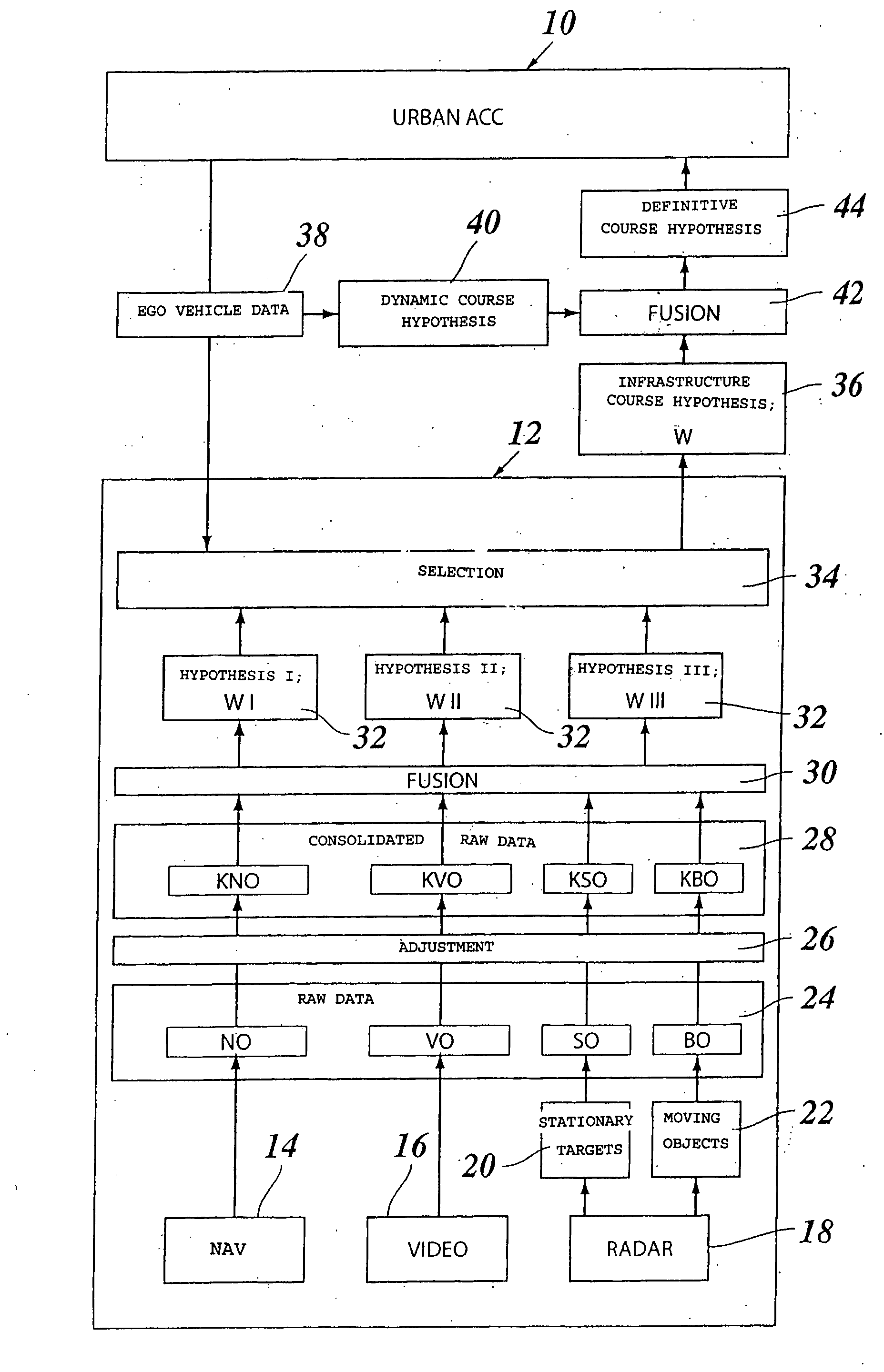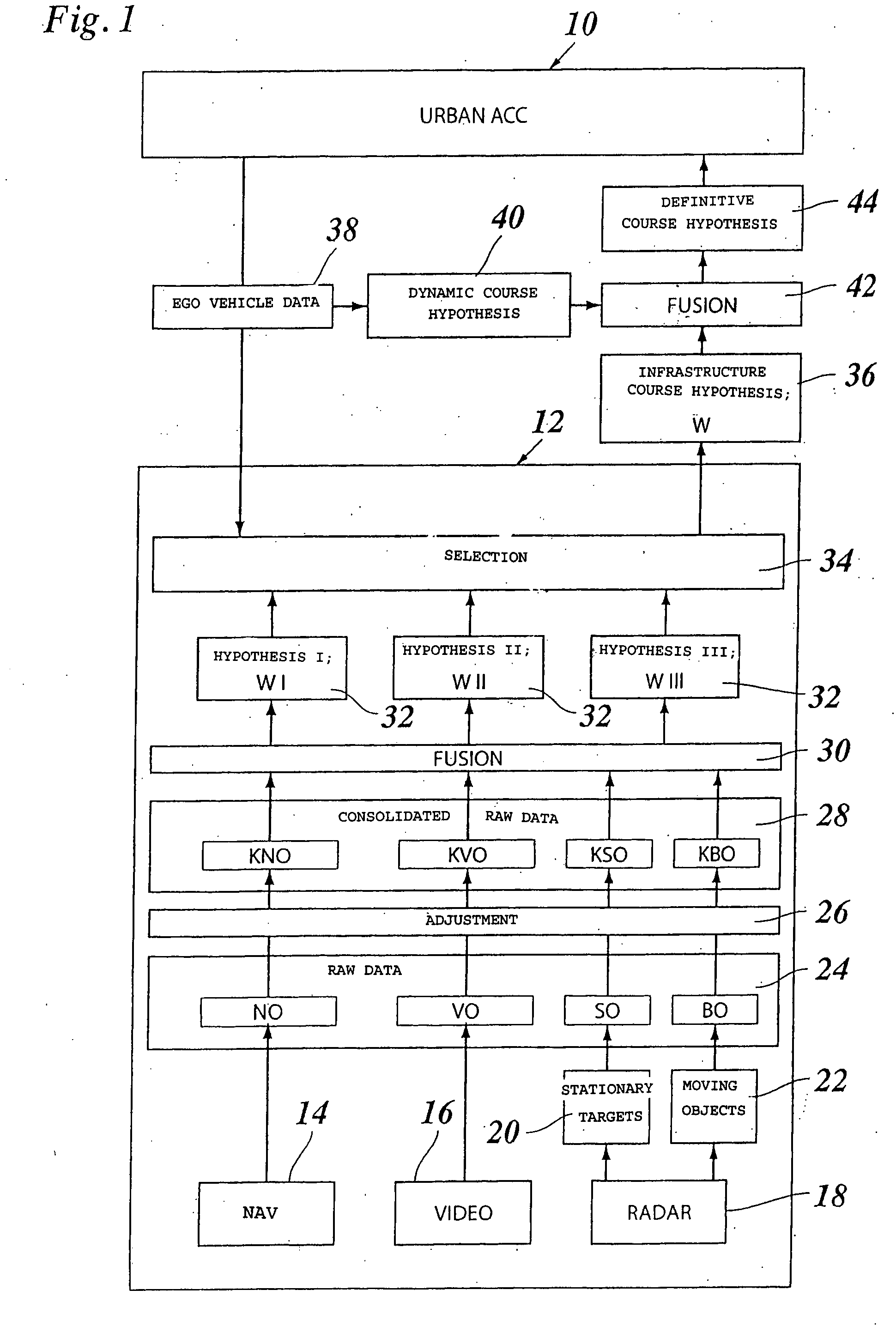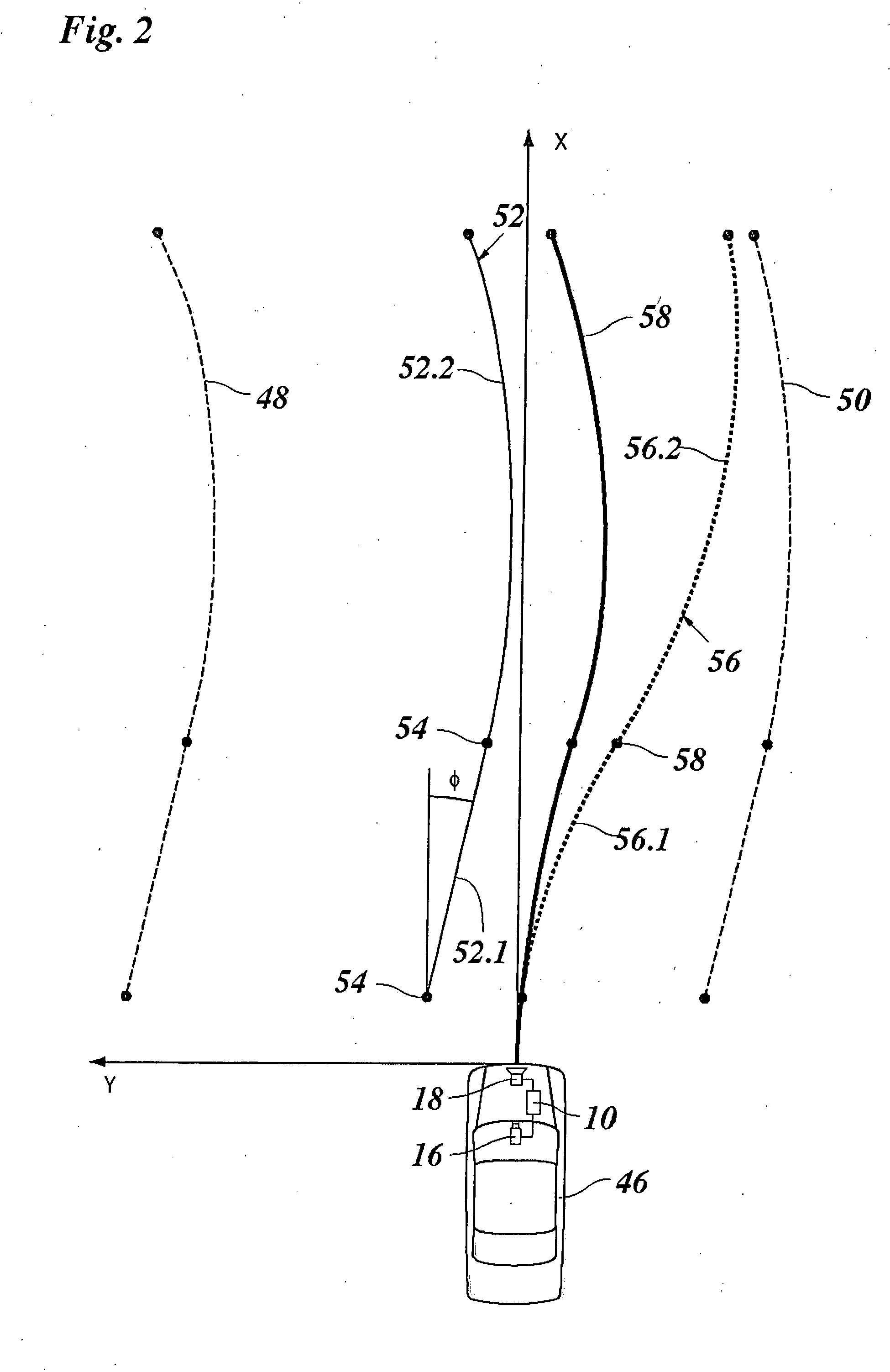Method for Course Prediction in Driver Assistance Systems for Motor Vehicles
- Summary
- Abstract
- Description
- Claims
- Application Information
AI Technical Summary
Benefits of technology
Problems solved by technology
Method used
Image
Examples
Embodiment Construction
[0024]FIG. 1 shows, as an example of a driver assistance system, an ACC system 10 that is labeled “URBAN ACC” here to indicate that the system is intended also to be suitable for city traffic. ACC system 10 is constituted in known fashion by one or more microcomputers and associated software, and is therefore depicted only in simplified fashion as a block. The associated sensor equipment is also not shown further in FIG. 1. Only those functions of the system that refer to course prediction are picked out as a separate block 12.
[0025]In the example shown, the information sources available for course prediction are, in addition to vehicle-dynamics data, the following: a navigation system 14, a video system 16, and a radar system 18 that also supplies the data for spacing control in the context of the ACC function. Radar system 18 localizes both stationary targets 20 and movable objects 22. The corresponding position data are evaluated in different ways, so that the stationary targets ...
PUM
 Login to View More
Login to View More Abstract
Description
Claims
Application Information
 Login to View More
Login to View More - R&D
- Intellectual Property
- Life Sciences
- Materials
- Tech Scout
- Unparalleled Data Quality
- Higher Quality Content
- 60% Fewer Hallucinations
Browse by: Latest US Patents, China's latest patents, Technical Efficacy Thesaurus, Application Domain, Technology Topic, Popular Technical Reports.
© 2025 PatSnap. All rights reserved.Legal|Privacy policy|Modern Slavery Act Transparency Statement|Sitemap|About US| Contact US: help@patsnap.com



